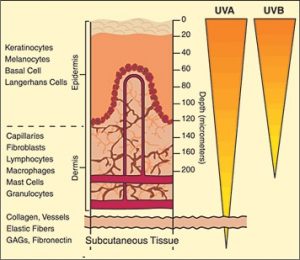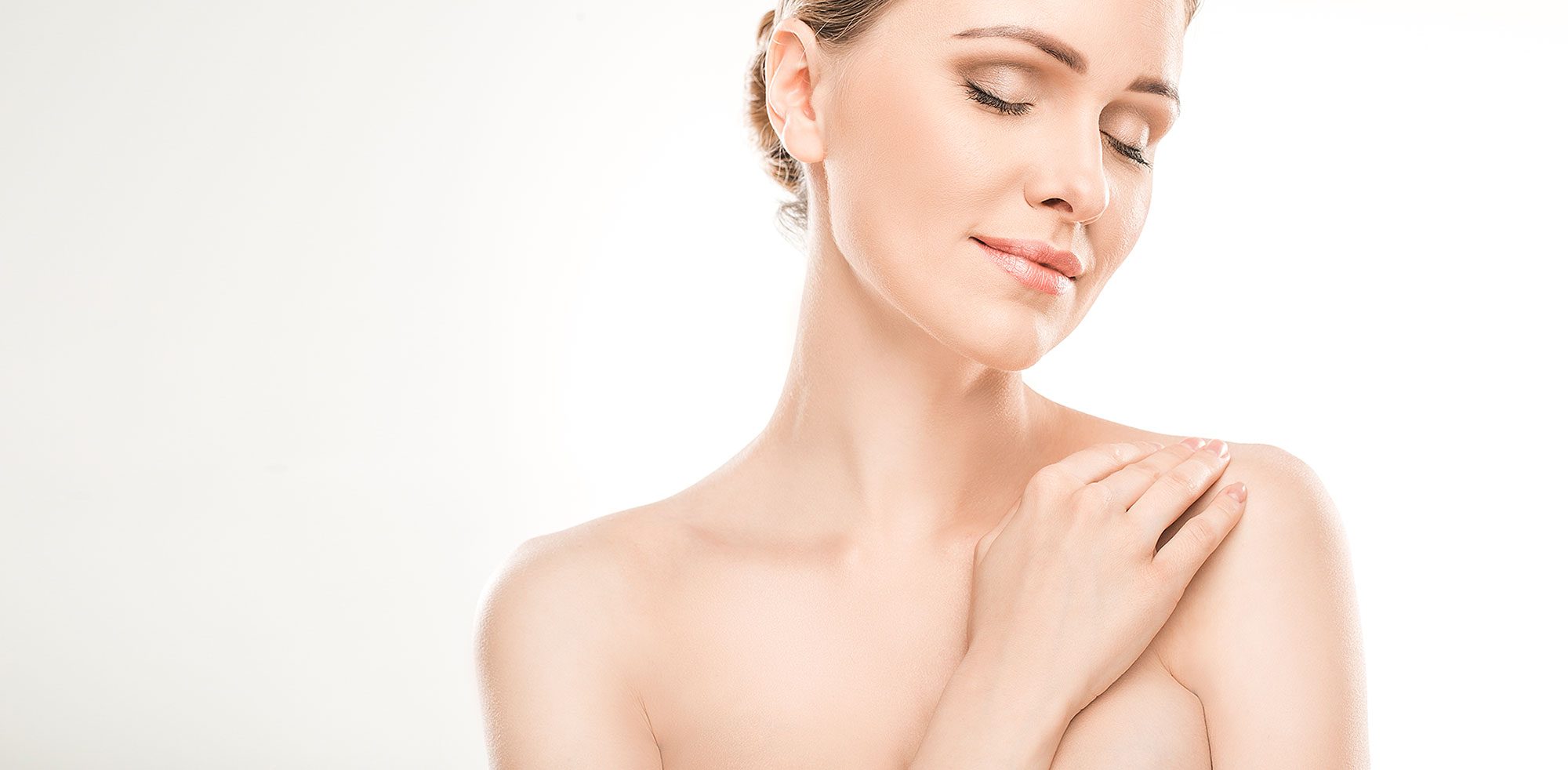
16 June Why do you get pigmentation?
A large part of our day-to-day work is around pigmentation of the skin, so this week we will be discussing the causes of pigmentation.
Sun exposure and sun damage
Some exposure to sunlight can be enjoyable, but too much sunlight can be dangerous; not really a problem this year though!
However overexposure to the sun’s ultraviolet (UV) radiation can cause immediate effects, such as sunburn, and long-term problems such as premature ageing and skin cancer.
Sunlight consists of two types of ultraviolet (UV) radiation, UVB and UVA.
Both UVB and UVA radiation contribute to freckling, skin-wrinkling, skin ageing and the development of skin cancer.

UVB radiation has the most energy and causes the most damage. UVB is only partially blocked by clouds or fog, so it is important to wear sunblock even on cloudy days.
This type of radiation intensifies during the summer and with higher elevations, and can do more damage more quickly than UVA rays.
Because of its damaging affect to the DNA of skin cells, UVB radiation is the main cause of sunburn and skin cancer.
Over the past 25 years, the thinning ozone means more UVB penetrates the atmosphere, increasing the risk for UVB-related sun damage.
UVA radiation is less powerful than UVB, but it penetrates deeper into the skin.
Small, daily doses of UVA causes long-term skin injury, even without signs of sunburn.
UVA light is used in tanning booths. Tanning booths not only cause the same type of skin and eye damage as natural sunlight, they may also be as much as 20 times stronger.
Melanin, ageing skin and melasma
Melanin
When the sun’s ultraviolet radiation reaches the surface of the skin, the skin reacts by producing melanin, a skin pigment that has a protective effect on the skin.
There are two types of melanin: eumelanin, which is black or brown, and pheomelanin which is yellow-red. The ratio of these two determines our skin colour. An increased proportion of pheomelanin is associated with lighter skin.
We know that melanin production is induced after exposure to the sun and UV radiation and plays a key role in protecting skin cells from UV radiation damage. However melanin pigmentation in the upper layers of the skin – the epidermis – causes skin changes such as tanning and mottled pigmentation.
Therefore, tanning after sun exposure is your body’s way response to sun damage. Having a tan provides minimal protection against sun over-exposure and is not a substitute for good sun-protective measures.
Over the years, our skin is exposed to a number of environmental triggers, which cause damage that can reach the deepest layers of your skin.
Photo-damage, caused by the sun’s harmful UVA and UVB rays, is the main cause of the fine lines, wrinkles and age spots that you may already see or you will eventually see on your face.
Ageing skin
Ageing can be categorised as ‘intrinsic’ (simply caused by getting old, our genetic makeup, skin type etc.) or ‘extrinsic’ (influenced by external factors such as smoking, sun exposure, lifestyle choices, pollution etc.)
Most people don’t realize that approximately 90% of what we perceive as inevitable ageing is caused by extrinsic factors – sun exposure being the main culprit. Just imagine – if you avoided the sun all the time you would look 90% younger than you do now!
Melasma and DSH
Cosmetically, the most common pigmentary presentations are melasma and Diffuse Sun-related Hyperpigmentation (DSH).
Melasma is a condition that usually occurs in younger women, and is influenced by both solar radiation and hormones.
DSH is seen more in women over the age of 30, and presents as large, slightly ash-brown areas that appear obvious in strong light, giving the forehead a dull, lifeless appearance.
Melasma and DSH are caused by skin pigment cells (melanocytes) producing excess pigment (melanin).
 If there is nothing else you gain from this blog, the one piece of information to store and use is that we recommend you wear a sunscreen that protects you against UVA and UVB every day.
If there is nothing else you gain from this blog, the one piece of information to store and use is that we recommend you wear a sunscreen that protects you against UVA and UVB every day.
UVA is around 365 days a year and therefore, sunscreen should be worn 365 days a year as those UVA rays can penetrate through cloud and glass – yes, even when it’s raining or snowing you need to wear sunscreen. Don’t think of it as sun – think of your protection as protection against UV damage!
UVA rays are just as guilty when it comes to causing pigmentation problems as UVB rays. While UVB rays cause tanning and potential skin cancer (think ‘B’ for burning), UVA rays penetrate deeper into the skin and cause wrinkles and pigmentation (think ‘A’ for ageing).
Read next week’s blog to find out what we can do to help with your sun damage.

